- Aviators of the smoky skies: Guns of Icarus Online
- Guns of Icarus Online: Adventure Mode Q&A with Jess Haskins
- Guns of Icarus Online: Adventure Mode Follow-Up Q&A
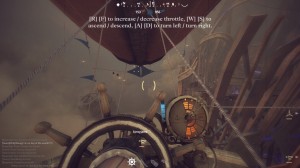
It seems all over for the crew of the airship Babbling Goldfish. On one side – the enemy, two airships bigger and heavier than ours. On the other – the ruins of a vast, ancient airship, still lodged vertically in the desert sand. Our hull and engines are being ripped to shreds, and the airship wreck blocks the most direct escape. Over voice chat, the consensus sounds in my ears: we’re going down. But manning the helm, I see one last chance. I steer us between towering pieces of wreckage – bare planks to our left, a piece of red-plated debris to our right. And the incoming barrage dies down. Did the wreck hide us from our pursuers? Or did they simply get bored and drift off? Whatever it is, we’re safe for now. Safe to make repairs, and safe to eventually rejoin the fight…
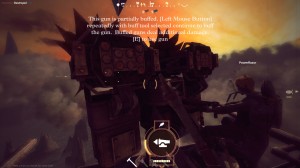
That is one of the stories I have accumulated in my last couple of weeks playing Guns of Icarus Online, a team-based airship combat title from indie studio Muse Games. (You might remember my very brief mention of the game last year, when it was just a trailer and a cool concept.) In Icarus, players take on the roles of airship crew – gunners, engineers, or pilots, with four crew members to one airship. (Note that the game is strictly PVP; while most unoccupied crew slots are filled by bots, each airship must be skippered by a human player.) Matches involve two teams (2-4 airships per side, depending on the map) either trying to score a set number of kills, or hold objective locations long enough to win. Each ship’s captain can choose between six available ship types, each of which can be further customised via choice of weapons – for instance, do I mount a flak cannon (long-ranged and best against the enemy hull), a carronade firing grapeshot (close-ranged balloon-popper), or a Manticore rocket launcher (long-ranged disabler) in my main gun slot? And depending on their class, crew members can choose which repair/buff items, ammo types, and piloting boosts to take into battle. Once in the game, the slow, deliberate combat feels closer to MechWarrior than to the typical FPS – ships take a while to reach their destination, and guns don’t fire that quickly. This changes once the ship takes damage – then it becomes a frantic game of ohnotheengineisred, and Someone fix the hull before we all die!
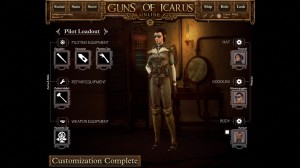
How well does this work in practice? First off, a disclaimer: I am terrible at this game. My kill:death ratio as a captain is 3:16! As such, I’m not the best person to comment on mechanics or balance – one reason why I hesitate to call this a review. That said, so far it has been a lot of fun to try out different roles. For instance, I find it a bit monotonous to run around playing repairman, but – even if I’m bad at it! – I love the mix of situational awareness, piloting acumen, and tactical skill required by a captain. Similarly – and again, like a MechWarrior game – I’ve had a lot of fun trying out different builds. I’ve crewed, or fought against, small, fast ships built to disable their opposition with close-range fire; lumbering capital ships fitted with long-ranged, hull-busting artillery; and probably everything in between. Sooner or later I expect players would settle on a preferred role/build, but they could certainly have fun working out what that might be! Thereafter, I think replayability will depend on the extent to which players want to stick around to master the game.
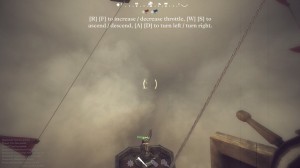
On the other hand, the game’s variety also offers an example of how it is a little rough – in two senses of the word. It’s unpolished, in the sense that it could probably do with better documentation or a tutorial. For instance, I had to trawl the game’s forum to learn the (dis)advantages of all these weapons – I don’t think it’s ever stated in-game that, say, carronades are best against balloons and flak cannons are best against hulls. This makes the game harder for newbies to learn. From what angle should I approach a Galleon? (Answer: the Galleon captain has a blind spot below, and the Galleon lacks any guns on its bow.) What’s the best way to turn in a hurry? (Answer: cut your engines or go into reverse – don’t try steering at full speed.) Do I have to hit the “Use” button to boost my engines with kerosene? (Answer: no, selecting it as the active item is enough.)
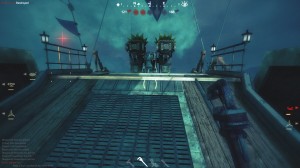
But the real appeal of Icarus is the experience it offers. This game is a labour of love, and it shows; Icarus’ art design makes up for any technical limitations born of indie constraints. Beauty and desolation go hand-in-hand: this is a world of glorious sunsets and luminous blue fog, dust storms and beached battleships lying forlornly on the desert sand. The music is simple but effective, from the lovely menu theme to the low, rhythmic drumbeat that sounds when you go into combat. Ditto the flavour text – I love that this is a world where captains turbocharge their engines with moonshine! The ships feel distinct, both in practical and in cosmetic terms: a zippy little Goldfish handles very differently from a mighty Galleon, blows up much more quickly, and is visibly far more ramshackle. The plank-and-rope bridge leading to the Goldfish’s aft engine is miles away from the comforting solidity of the Galleon’s hull, and the Galleon even has carpet on the stairs leading up to its poop deck! Most of all, the team-based gameplay – when playing with a cooperative crew – meshes beautifully with the game’s subject matter. When my gunner calls for me to steer up and to the left so he can get in a shot, or I warn the crew that I’ve seen bandits at three o’clock high, so stand by the main guns, that is when the illusion that I’m on an airship becomes its most convincing.
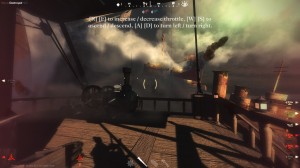
That illusion – as produced by art, music, and teamwork – is the best reason to play Guns of Icarus Online. There are games better at producing moment-to-moment thrills, and there are almost certainly games with more lasting appeal. But nothing, so far, has brought a steampunk/dieselpunk atmosphere so vividly to life. Recommended for fans of team/vehicle-based multiplayer, steampunk buffs, and anyone who might want to re-enact Last Exile; though the caveat is that this is something best played with friends – keep an eye out for 4-packs during the next Steam sale!
Note: Muse Games has stated that the next stage in Icarus’ development (no timeline as of yet) will be “Adventure mode” – a paid expansion that will add a persistent world, trade, and factions. I look forward to hearing more.
Resources
“Classroom” subforum at the official site
The basis of my… well, it’s more than a quick look
Time spent with the game: Around three hours of actual match time, according to the game. This translates into 18 matches, plus a couple more I played during the beta.
What I have played: At least 3-4 of the game’s maps, and two out of the six available ship types (Galleon, Goldfish). I’ve played with both friends and pick-up groups (PUGs).
What I haven’t played: The remaining four ship types. The remaining maps.

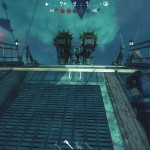
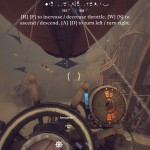


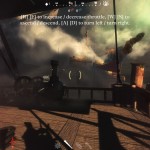
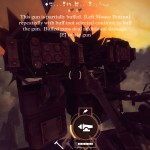
3 thoughts on “Aviators of the smoky skies: Guns of Icarus Online”